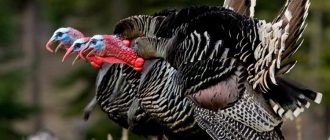Want in on a turkey hunting secret or two? Get the best turkey hunting secrets which will let you get you better access to henned up, silent and tough gobblers…
Turkey hunters actually dream of the perfect hunt where the gobbler responds to a few calls that they make. However, it is very rare that a single cluck will cause a gobbler to pay attention and start moving towards you. It is even rarer that a gobbler will actually start responding to your clucks and come into view that easily.
Turkey hunting is a different ballgame altogether. The gobblers are tough birds who are aware of the fact that they are being scouted by predators and therefore are extremely careful in their response towards turkey calls.
The hunt requires a well-planned and extremely well-prepared hunter who would probably get a kill much later than midmorning. However, patience seems well worth it as you drive home with a kill that took hours of effort to get.
It is important to see how successful turkey hunters have been faring and what most of them recommend as to how you start calling after roost hunting has finished. That is the time when most of the gobblers come in and while it may be more thrilling to call poultry off the roost it is much more rewarding to actually hunt down a gobbler later.
Strategies Utilized By Professional Turkey Hunters:
Cutt and Run
A key strategy, which is favored by most hunters, is to continue walking while you call to locate the turkey. This is known as cut and run by most professional hunters. When you keep moving around in the foliage at a silent pace it is more likely that you will find stray a turkey that starts responding to you in hopes of reuniting with its clan. You should start off with loud aggressive calls on a repeated basis designed to attract the gobbler towards a lost hen. It is actually much more likely that the turkey will be responsive to a pleading call by a turkey hen than actually responding to seductive calls.
Staying Alert
You should keep moving and keep a distance of hundred yards between the two calls that you make in order to maintain some space between you and the gobbler and be prepared to shoot. A hunter must be very alert and not get surprised to see one of the long beard or wild turkeys at a 30 yard distance from him. This can perhaps startle the hunter more than the turkey itself at times and leave him in no position to shoot and kill.
Strategic Location
Choose your site very carefully because the turkey might be coming in at a soft running pace and you will hardly have time to set up once it is in view. Utilize variation between soft clucks and subtle purrs or loud and aggressive calls. Check what the turkeys are responding to and then continue with those calls so that you can read the mood of the wild turkeys in your vicinity.
Tube Calling
In tough situations professional hunters recommend the tube call. You should realize that most of the turkeys have been scouted and hunted before by turkey hunters. This makes them alert and wary of the different turkey calls that you might choose. A tube call will provide you a unique option that the turkey has not heard before and most other hunters use strikers or box calls. So why not tempt them with something different? Tough gobblers often defined as henned – up turkeys can be caught successfully using this strategy. These are basically the gobblers who are in the company of turkey hens and are extremely hard to lure away. Often turkey hens seem to take the gobblers further away from you so you will need to combat their calls by using loud cutting sounds to attract the gobblers to you.





